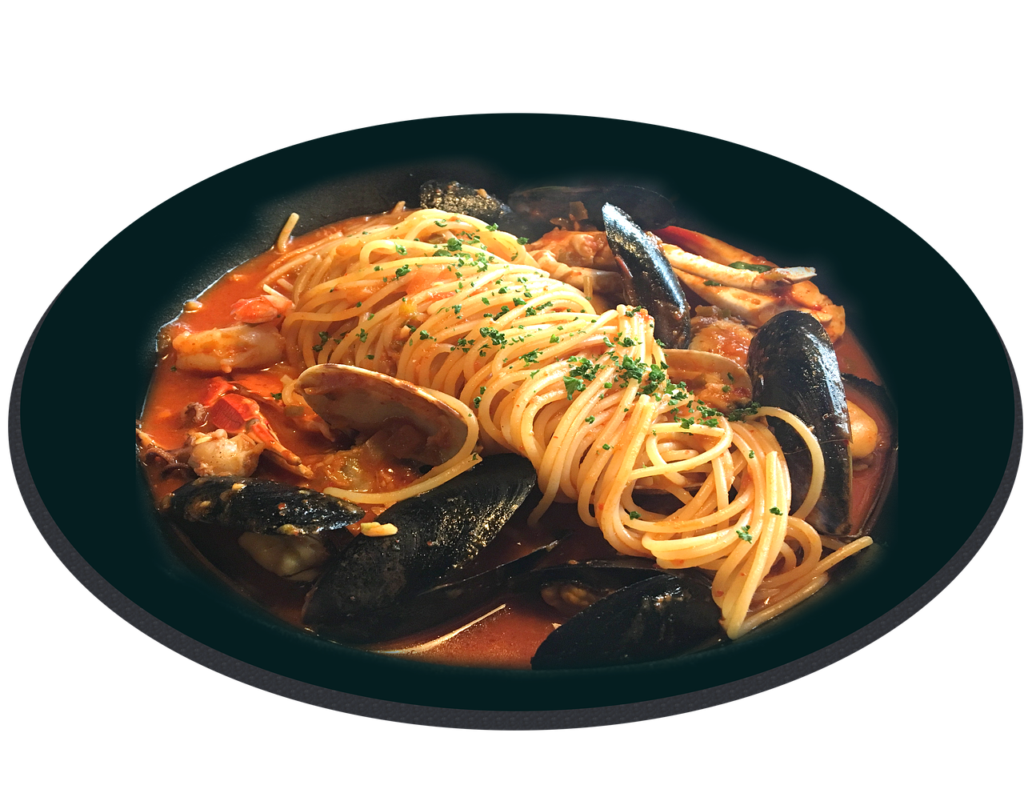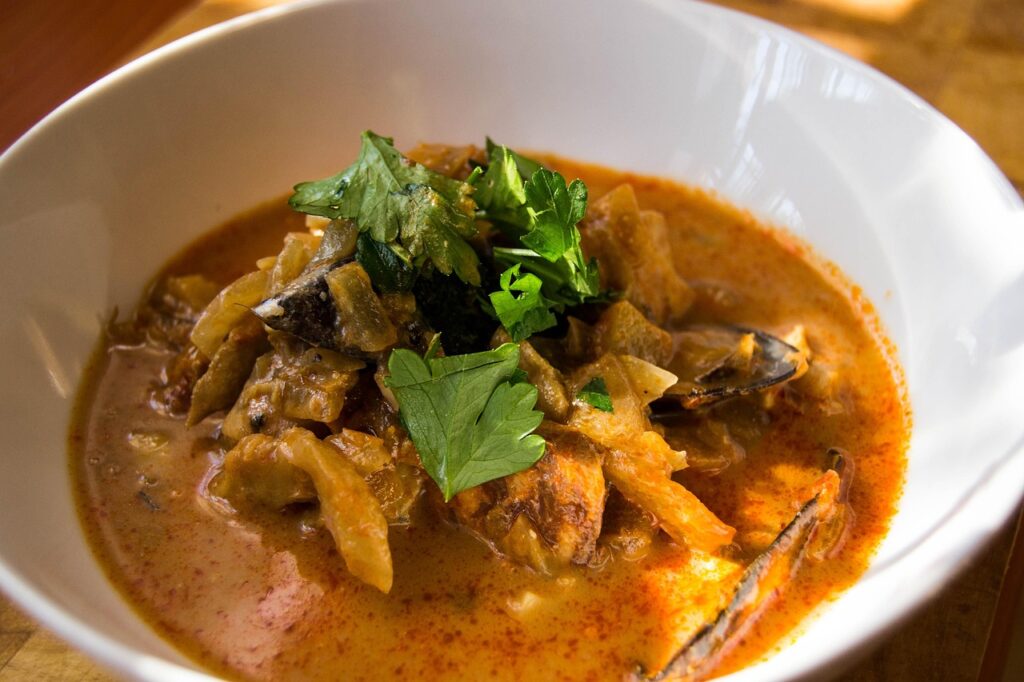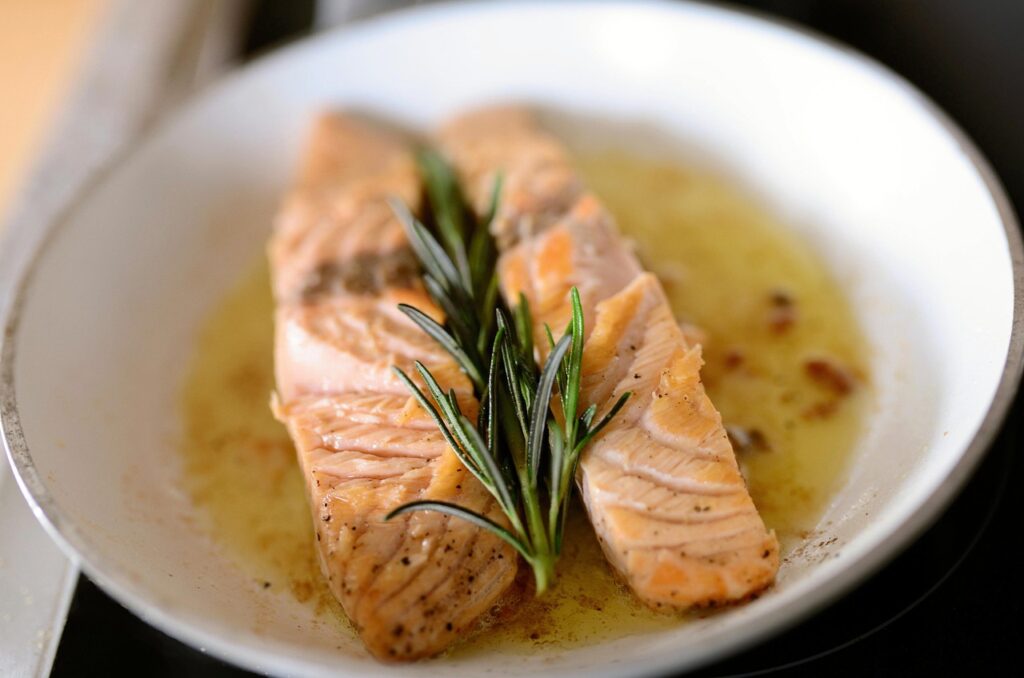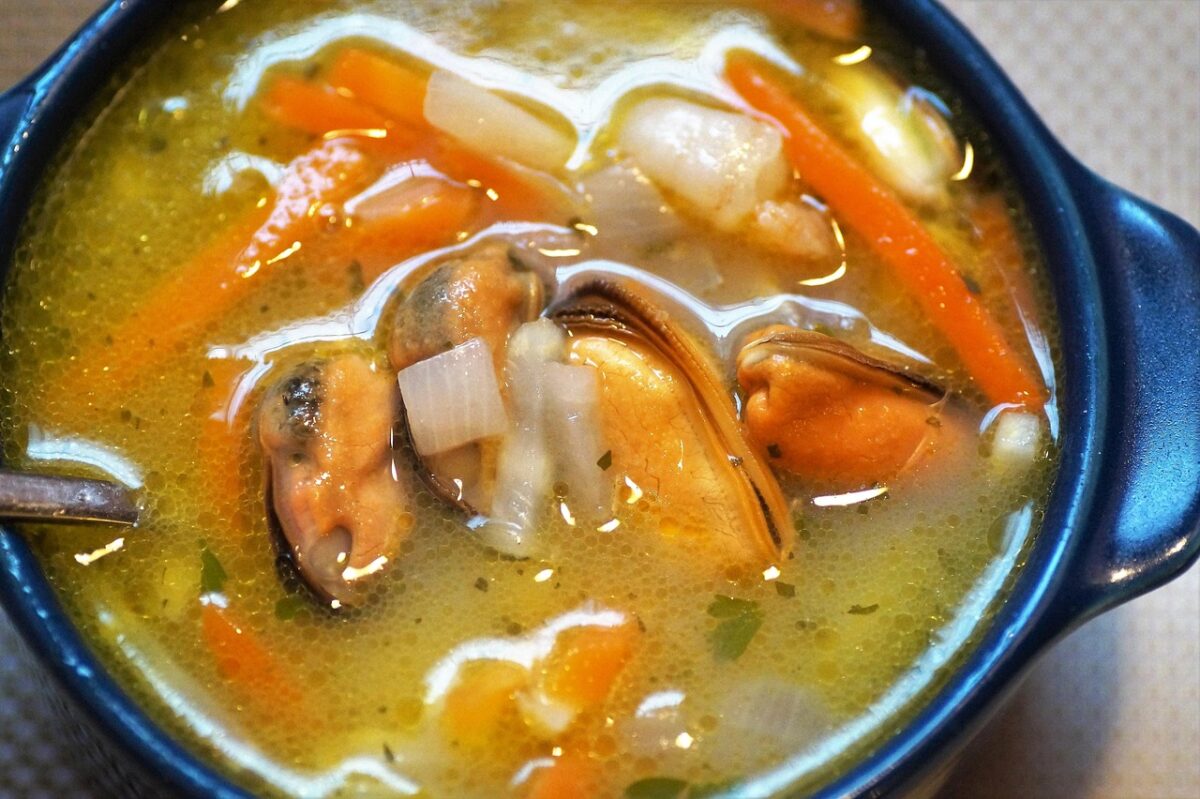Seafood gumbo is a beloved dish that embodies the spirit of Southern cooking, particularly in Louisiana, where both Cajun and Creole influences blend harmoniously. This rich, hearty stew is packed with fresh seafood, aromatic spices, and a dark, flavorful roux, making it a perfect comfort food for gatherings and special occasions. Whether you’re a novice or an experienced cook, this guide will walk you through the essentials of making an authentic seafood gumbo, including variations, tips for success, and serving suggestions.
Seafood Gumbo Recipe: Introduction & Flavor Profile

At its core, seafood gumbo is characterized by its complex flavors and textures. The combination of shrimp, crab, and fish, paired with the earthy taste of the roux and the fresh notes of vegetables, creates a dish that is both satisfying and deeply flavorful. The use of spices like cayenne and thyme adds warmth, while the addition of okra or filé powder contributes a unique thickness to the stew.
Essential Equipment for Making Gumbo
Having the right tools on hand will make the process smoother and more enjoyable. Here’s what you’ll need:
- Heavy-bottomed pot or Dutch oven
- Wooden spoon or spatula
- Measuring cups and spoons
- Sharp knife and cutting board
- Serving ladle
- Storage containers for leftovers
Seafood Gumbo: Classic Recipe
Ingredients
- 1/2 cup vegetable oil
- 1/2 cup all-purpose flour
- 1 large onion, diced
- 1 green bell pepper, diced
- 2 celery stalks, diced
- 4 cloves garlic, minced
- 1 teaspoon cayenne pepper (adjust to taste)
- 1 tablespoon dried thyme
- 1 tablespoon paprika
- 1 bay leaf
- 6 cups seafood stock or chicken broth
- 1 pound shrimp, peeled and deveined
- 1 pound crab meat
- 1 pound white fish fillets, cut into chunks
- 1 cup okra, sliced (optional)
- Salt and pepper to taste
- Chopped parsley and green onions for garnish
Step-by-Step Method
- In a heavy-bottomed pot, heat the vegetable oil over medium heat. Gradually whisk in the flour to create a roux.
- Cook the roux, stirring constantly, until it reaches a deep brown color, about 20-30 minutes. Be careful not to burn it.
- Add the diced onion, bell pepper, and celery (the “holy trinity”) to the roux. Cook until softened, about 5 minutes.
- Stir in the garlic, cayenne, thyme, paprika, and bay leaf. Cook for an additional 2 minutes.
- Slowly add the seafood stock, stirring to combine and break up any lumps.
- Bring the mixture to a simmer and cook for 30 minutes, stirring occasionally.
- Add the shrimp, crab, fish, and okra (if using). Cook until the seafood is just done, about 5-10 minutes.
- Season with salt and pepper to taste. Remove the bay leaf before serving.
- Garnish with chopped parsley and green onions. Serve over rice.
Notes
For a richer flavor, consider using homemade seafood stock. You can also adjust the spices according to your heat preference.
Seafood Gumbo Variations

Gumbo is a versatile dish, and there are many ways to customize it. Here are five popular variations:
Cajun Seafood Gumbo
Focus on bold spices and a darker roux. Substitute the fish with andouille sausage for added depth.
Creole Seafood Gumbo
Add tomatoes to the base for a slightly sweeter flavor. This version often includes bell peppers and is lighter in spice.
Vegetarian Seafood Gumbo
Replace seafood with heartier vegetables like mushrooms and zucchini. Use vegetable broth and skip the roux for a lighter option.
Spicy Seafood Gumbo
Increase the cayenne and add diced jalapeños for an extra kick. Pair with spicy sausage for more heat.
Seafood and Sausage Gumbo
Combine shrimp and crab with andouille sausage for a heartier stew. Adjust cooking times to ensure all proteins are cooked through.
Step-by-Step Guide: How to Make Seafood Gumbo
Follow these steps for a foolproof gumbo:
- Start with a well-made roux, cooking until it’s a deep chocolate brown.
- Incorporate the “holy trinity” for a flavor base.
- Add spices gradually, tasting as you go.
- Introduce the stock slowly to maintain a smooth texture.
- Cook seafood just until done to prevent overcooking.
Tips for Perfect Gumbo Every Time
- Pay attention to the roux: A well-cooked roux is key to flavor and color.
- Use fresh, high-quality seafood for the best taste.
- Experiment with spices and herbs; gumbo is forgiving and can be tailored to your palate.
- Allow the gumbo to sit for a few hours or overnight for the flavors to meld.
Common Mistakes & How to Fix Them
Even experienced cooks can run into issues. Here are some common mistakes and how to resolve them:
- Roux burns: If this happens, you may need to start over; a burnt roux will ruin the flavor.
- Too thick or too thin: Adjust the consistency by adding more stock or simmering longer to thicken.
- Overcooked seafood: Add seafood towards the end of cooking to keep it tender.
- Lack of flavor: Taste and adjust seasoning throughout the cooking process.
Serving Suggestions & When to Serve

Seafood gumbo is perfect for a variety of occasions:
- Serve it at family gatherings or potlucks as a comforting main dish.
- Pair with crusty French bread or cornbread for a complete meal.
- Consider serving it during festive occasions like Mardi Gras or seafood festivals.
Storage, Freezing & Reheating Seafood Gumbo
Proper storage is essential for maintaining the gumbo’s flavor and texture:
- Store leftovers in airtight containers in the refrigerator for up to 3 days.
- For longer storage, freeze gumbo in freezer-safe containers for up to 3 months.
- Reheat on the stovetop over low heat, adding a splash of stock if necessary to restore consistency.
